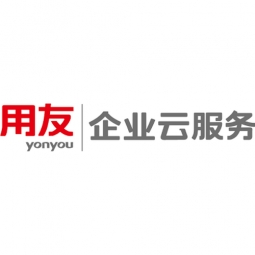Infor
Innovate is what we do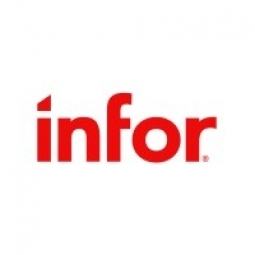
Overview
|
HQ Location
United States
|
Year Founded
2002
|
Company Type
Private
|
Revenue
$1-10b
|
|
Employees
10,001 - 50,000
|
Website
|
Twitter Handle
|
Company Description
Infor builds business applications with last mile functionality and scientific insights for select industries delivered as a cloud service. Built by industry, built on open standards, built to work beautifully
IoT Snapshot
Infor is a provider of Industrial IoT functional applications, analytics and modeling, infrastructure as a service (iaas), sensors, platform as a service (paas), networks and connectivity, and application infrastructure and middleware technologies, and also active in the aerospace, automotive, buildings, cement, chemicals, food and beverage, healthcare and hospitals, national security and defense, and retail industries.
Technologies
Use Cases
Functional Areas
Industries
Services
Technology Stack
Infor’s Technology Stack maps Infor’s participation in the functional applications, analytics and modeling, infrastructure as a service (iaas), sensors, platform as a service (paas), networks and connectivity, and application infrastructure and middleware IoT Technology stack.
-
Devices Layer
-
Edge Layer
-
Cloud Layer
-
Application Layer
-
Supporting Technologies
Technological Capability:
None
Minor
Moderate
Strong

Supplier missing?
Start adding your own!
Register with your work email and create a new supplier profile for your business.
Case Studies.

Case Study
Optima Energy Systems Enhances Analytics with Infor Birst
Optima Energy Systems, a leading energy management software provider, was facing challenges with its existing reporting system. The company had built an extensive collection of bespoke reports for its customers, which included large, multi-site organizations like supermarkets, water companies, telecom companies, and universities. However, every new customer required a different report, leading to a messy pile-up of options and settings that became increasingly cumbersome and difficult to support. The original reporting technology was unfamiliar to many, causing Optima Energy Systems to spend a disproportionate amount of time manually building reports rather than focusing on future product enhancements. The company sought to replace its existing reporting capability to improve development efficiency and transform its manual and resource-intensive reporting environment into a customer self-service reporting infrastructure.

Case Study
CleanTelligent Enhances Janitorial Software Solutions with Infor Birst
CleanTelligent Software, a company that aids in-house and contracted janitorial teams in streamlining communication and improving quality control, faced a significant challenge. Their clients were demanding a more dynamic way to present reporting data. The company's software was primarily used to analyze and summarize a custodial team's performance, replacing a highly manual, paper-driven process. However, the initial differences between service providers in the janitorial industry are often unclear, and the cost of switching is comparatively low. This situation led to high client turnover, with a janitorial company's customer lifetime averaging four years or less. CleanTelligent needed to improve the customer experience with dynamic dashboards and reporting, retain customers through predictive analysis, capitalize on advanced analytics capabilities to build market differentiation, and improve client retention rates.
Case Study
Top 10 US Oil & Gas Exploration and Production Company
The Company was unable to react quickly to changes in production rates, labor and down times. It relied on disjointed data warehouses to manage multi- million dollar well sites. After 35 acquisitions, the company needed to integrate its acquired systems and applications to more efficiently manage its operations. The objectives were to provide analytics on well management such as production rates, downtimes, labor productivity, forecast vs. actual, etc. and to fully integrate data across all acquisitions. The technical challenges included multiple disparate acquired systems and applications from 35 acquisitions and 7 disjointed data warehouses.
Case Study
Birst™ Provides Jive Software with Enterprise-Wide Business Intelligence
Jive Software, a leader in social business, was facing challenges with its reporting processes. The company used several applications to manage its day-to-day business, but these applications were not integrated in terms of their data. Each application lacked strong reporting capabilities and Jive was unable to easily tie together information across applications to gain a complete view of the business. As a result, employees had to download reports that were manually created in Excel each month. This process was time-consuming and left little time for employees to focus on the meaning of the reports. The company realized it needed a solution that could quickly and easily analyze information within and across applications.
Case Study
True Textiles Weaves Birst Business Analytics into Key Production Processes
True Textiles, a leading manufacturer of commercial textiles, was using a traditional, on-premise Business Intelligence (BI) solution for nearly a decade. While the solution helped to combine the company’s disparate data sources, it was difficult to use, with limited functionality. Its costly licensing model made expansion of the deployment prohibitively expensive, so a small group of administrative and IT users ran reports for the rest of the organization. As additional questions arose, reports were modified and run again in a time-consuming, cumbersome process that reduced employee productivity and slowed decision-making. As their expectations shifted, they began to look for an easy-to-use, self-service solution that would give them quick access to advanced functionality. They needed a solution that could expand beyond their sales department to help them cost-effectively improve performance across the organization.
Case Study
Go to Market with a New Analytic Product in Just 8 Weeks
Qvidian, a cloud-based sales execution software provider, was looking to replace their existing, static reports, to increase customer value and boost product differentiation. Despite the fact that Qvidian already provided reporting capabilities to its clients, the company decided to upgrade to more modern and self-service analytics. The risk of not creating a new analytic product would mean static reports, keeping the focus of Pro Services away from value-add services, and instead on building tactical, custom reports. Customers would have an inability to measure the impact of Qvidian products on their business and the sales team’s inability to show and prove the value of the product for new and upsell business. There would also be a lack of visibility into product usage and trends to make informed roadmap decisions.
Case Study
American Express Global Business Travel uses Infor Birst to create Premier Insights product
American Express Global Business Travel (GBT) wanted to increase its market share by differentiating its core services through a strategic investment in smart analytics for travel booking. The company aimed to show its clients how booking directly through the system instead of personal cards could lower costs. It also wanted to offer buyers, such as the head of finance and department managers, insights on employee spend and travel savings. Another challenge was to increase sales win rates and shorten sales cycles.
Case Study
DiamondStream Bets New Business on Birst’s™ Agile Business Analytics
DiamondStream, a company that provides analytical insights to casinos, wanted to create an online application that would provide casinos with unmatched insight into the marketplace and patron behavior. The company needed a partner that could contribute the analytical expertise and technology on which this new application would be based. The partnership would provide the means for DiamondStream to build a data warehouse that could hold and de-duplicate GCA data and provide an intuitive user interface with online dashboarding capabilities. Using this interface, casinos would be able to answer their most pressing business questions by easily accessing day-level data and drilling-down for more detail as needed.
Case Study
Increase Revenue And Enterprise Performance With Birst
Vital, a Toshiba Medical Systems Company, is a leading provider of medical imaging and visualization software for clinicians. The complexity of its product line, from front-line healthcare solutions to back-end monitoring tools and machine-to-machine connectivity, made the sales pipeline and forecast complex. Vital tracks sales opportunities in Salesforce and manages orders using NetSuite. These applications don’t speak to each other, so the organization lacked the ability to compare forecasted, actual, and targeted performance. They needed a BI solution that could easily combine and analyze data maintained in different applications, creating a single, comprehensive source of the truth. They also wanted to avoid anything that would require a massive investment of time and resources, and needed a solution that would easily scale to meet their future needs.
Case Study
KYDEX, LLC Uses Birst to Gain Faster, Easier Access to Key Information and Analysis
KYDEX, a leader in specialty thermoplastic sheet manufacturing, was previously relying on a text-based ERP system for sales operations reports. The process was time-consuming and inefficient, requiring IT employees to export data and perform additional calculations related to each period’s billings and bookings. These static reports were then distributed to decision-makers who would have to contact IT for any additional analysis. When the company decided to change ERP systems, it saw an opportunity to implement a Business Intelligence (BI) solution as well.
Case Study
Teach For All Tackles Educational Inequity with Birst’s Analytical Insight
Teach For All is a global network of independent social enterprises working to expand educational opportunities in their respective countries. The organization gathers and analyzes data related to key metrics such as organizational growth, teacher retention, and number of students reached to maximize learning and identify best practices across the network. Initially, Teach For All used time-consuming spreadsheets to combine and analyze the data. While the analysis proved valuable, the process was labor-intensive and not sustainable in the long term. The organization needed an analytics solution that could automate the process and expand the initiative.
Case Study
Vertafore Analytics: Turning Raw Data Into Revenue
Vertafore, a leading provider of insurance software and technology, wanted to leverage its wealth of raw data to launch an analytics product that would provide agents and carriers with key performance indicators (KPIs) and competitive intelligence. The insurance industry is facing disruption from various fronts, including carriers going direct to consumers, usage-based insurance, and search engines that provide consumers with competitive pricing. To manage against these competitive threats, agencies and carriers need to understand sales trends, customer retention, and benchmark against peers to measure progress and uncover opportunities. Vertafore's unique position in the industry provides it with data from sources across the policy lifecycle, making it uniquely positioned to collect, analyze, and distribute market insights that can improve its customers' competitive positioning.
Case Study
Graydon Delivers Networked Analytics
Graydon, an international business information provider, was facing challenges in making use of its vast data every day. Each team within the company had their own reporting requirements and sources of data to consider. The Marketing team wanted to get more insight into how campaigns delivered revenue and financial results, but this required data from the Finance team. The existing visualization tool in place did not support the types of data that would be required for this extended project. It would also be difficult to integrate and make data available for everyone across the business to use.
Case Study
Sunny Delight Beverages Co. Case Study
Sunny Delight Beverages Co., a leading producer of juice-based drinks in North America, was facing a challenge with its legacy business intelligence applications. The company had eight different legacy business intelligence applications in place, all with independent silos of data. This led to conflicting figures being presented to executives as end users were working off unique silos of data. This disparity led to revenue unpredictability, lower margins than necessary, high inventory buffers, and a lack of understanding true profitability from sales promotions. The legacy systems SunnyD had in place were too monolithic to support user self-service and agility. End-user data discovery tools, on the other hand, would amplify existing data silos.
Case Study
Global Investment Management Company
The Firm wanted to enable its 250 financial analysts with the most up-to-date information and also allow them to use Microsoft Excel, their tool of choice. Given the breadth of holdings – Equity, Fixed Income –analysts are evaluating securities, derivatives, options and any tradeable financial instrument; the data is highly complex. With global markets open around the clock, speed is a competitive requirement. The analysts had built a custom tool from Microsoft Excel that the legacy system in place, Oracle BI, wouldn’t integrate into. Any replacement system needed to have seamless integration into Excel. Market data from multiple sources requires transformations to make the data consumable for analysis. Oracle BI couldn’t perform these transformations rapidly enough for up-to-date intelligence. A replacement system needed to process millions of records rapidly.
Case Study
Global Energy Management Company
As the business units of the Global Energy Management Company grew, they became frustrated with reporting latency while waiting on central IT and Oracle BI. In response, they deployed desktop discovery solutions for self-service analytics. However, these analytic silos created a rift between business and IT. The Company saw an opportunity to modernize BI, heal the rift with the business units by delivering true self-service, and leapfrog competition in a commodities market. The technical challenges included a rapid go-live requirement in a highly-complex environment against 200+ data sources, a global M&A agenda that would drive further data complexity, and requirements for true self-service with centralized governance.
Case Study
Global Digital Entertainment Technology Company
The Company wanted to be more data-driven. The executive team demanded more analytics and reporting. End users were tired of waiting around for IT to deliver reports. Objectives were to provide executives with a holistic view of company metrics, enable organization with self-service analytics to make data-driven decisions, and scale analytics with minimal IT resources. The technical challenges included hundreds of disparate metrics and reports spread across the organization and the need to replace Oracle OBIEE solution.
Case Study
Large Publisher of Wedding News and Inspiration
The Company is a rapidly growing online publisher serving the wedding market. It offers wedding-related content, planning tools, and online registry services through its various websites. The Company also produces branded video and mobile content and magazines. The Company needed an agile way to support both internal employees and external clients across multiple revenue streams. The objectives were to support self-service analytics for both internal users and clients across all lines of business and understand the performance of advertising and registry transactions across different web properties. The technical challenges included distinctly different data models and calculated metrics across multiple lines of business, strict performance SLAs for data processing & incremental loads, and UX requirements: dashboards, pixel-perfect reports, embedded analytics, and Tableau integration.
Case Study
Large Sales and Marketing Services Company
The company, a leading sales and marketing services provider in the consumer packaged goods (CPG) industry, wanted to provide value-added data services to its clients. It aimed to offer analytics on product types, brands, regions, campaigns, inventory, and sales. The objectives were to create value-added services for its clients, give manufacturers visibility into sell-thru rates, and give retailers visibility into product sales, fit, propensity to buy, etc. The technical challenges included managing data relationships between various factors for 1000+ brands across 10,000 stores, the need for near real-time intraday data processing, and catering to 1000+ end users who need easy-to-consume information.
Case Study
Large Diagnostics Company for Animal Health
The company, which sells diagnostic and medical equipment to veterinary offices and labs, as well as information management and EMR software, faced a challenge in integrated billing and financial reporting due to the diversity of its product lines and sales models. It struggled to measure customer value and product profitability across three different business units. The company aimed to deliver a simplified billing process so that each clinic, lab, or veterinary facility receives one bill, gain roll-up of revenue metrics as well as drill down across disparate sales channels, and understand lifetime value by customer.
Case Study
Global Energy Management Company Case Study
The company faced a significant challenge in gaining visibility into purchasing analytics across more than 200 ERP systems. This was due to its growth through mergers and acquisitions, which resulted in data being siloed across these disparate systems. The company aimed to consolidate and optimize $10B in spend on products, components, and raw materials. It also sought to build a Global Analytics Platform to identify savings opportunities and enable more regular and accurate negotiations with suppliers. However, the company faced technical challenges such as the need for a rapid go-live in a highly complex environment against 200-source ERP. The company's global M&A agenda was also expected to drive further data complexity. Furthermore, the company required true self-service with centralized governance across a complex data landscape.
Case Study
Global Agency: Consistent metrics and definitions across global agency worldwide
The Company has grown at a tremendous rate over the years. With hundreds of offices worldwide, it needed consistent and maintainable metrics and definitions across the global organization. Additionally, it wanted to provide advertisers with individualized, value-added insights from their respective ad campaigns. The objectives were to have consistent metrics and definitions across a worldwide network of agencies and sub-agencies, provide individualized, value-added insights to advertisers, and scale analytics with current IT resources with end-user self-service data analytics. The technical challenges included the complexity of global and local disparate data sources and the need to replace IBM-Cognos while augmenting Tableau and Excel.
Case Study
International Publisher of Daily Business News Transforms Business Model with Birst
The Company underwent a significant transformation from print to digital, with a new business model focused on subscription revenue replacing advertising revenue. The Company sought a solution to democratize Business Intelligence (BI) across the organization and drive the Company in new directions. The objectives were to transition from an ad revenue-based business to a subscription revenue model, enable a deep understanding of the subscriber base, and provide the organization with self-service analytics to make data-driven decisions. However, the Company faced technical challenges, including a highly customized “spaghetti” of legacy applications in place and the need to replace SSRS and Jaspersoft reporting solutions.
Case Study
Top 10 Financial Data Services Company
The Company, a top 10 financial data services company, was facing a challenge with its sales forecast due to its large sales organization of over 1,000 reps and an ever-growing selection of products. The executive team had difficulty aligning and agreeing on priorities due to the lack of a clear outlook on the sales forecast. The company had hundreds of reports on sales, product performance, orders, deals, products, etc. for over 1000 sales people. They were looking to replace their existing BOBJ and Cloud9 reporting solutions.
Case Study
Miller Industries hauls out siloed data with Infor Birst
Before deploying networked business intelligence (BI) from Infor® Birst, the information needed to manage finance, sales, and manufacturing processes was locked in multiple systems and only accessible to technical experts. Decentralized analytics teams pulled data directly from source systems, generating islands of information that could not be shared. Further, executive-level reporting was manual, and it was very time-consuming to not only access information but also to reconcile inconsistent metrics. These manual processes greatly increased the time it took Miller Industries to make decisions and were a huge drain on the productivity of the management teams.
Case Study
Midwest Wheel increases operational efficiency with Infor CloudSuite Distribution
Midwest Wheel, a large truck parts distributor in the Midwest, was facing challenges in managing its complex operations as the business continued to grow. The company was delivering to 95% of its customers every day, but it aimed to provide the same service level to the remaining 5% of customers. To scale quickly and meet customer demand, Midwest Wheel needed a fully integrated system that could manage inventory across its six warehouses, enable complex workflows and alerts, and facilitate more online business. The company was also dealing with manual processes and system modifications that reduced productivity, and a lack of data visibility and reporting that created silos within the business and increased errors.
Case Study
DVF successfully transforms into a DTC-first business with Infor Birst
Diane von Furstenberg (DVF) wanted to shift its focus from partner sales to direct sales, driving all online traffic and sales directly to dvf.com. This required maintaining the right content, products, pricing, and inventory levels. Margins also had to be monitored closely to ensure online price reductions didn’t negatively impact profitability. Having KPIs that provided visibility across stores and online was critical to making the adjustments needed for optimal inventory and pricing. And complete visibility into customer interactions meant DVF could better identify customer segments and target them with the right offers.
Case Study
Pilot Flying J refuels its analytics with Infor Birst
Pilot Flying J, the largest operator of travel centers in North America, embarked on an IT modernization program to replace 25 different IT systems. The company wanted to replace its existing disparate systems with a suite of cloud-based Infor applications. The goal was to spend more time with its guests and for team members to spend less time on administrative or infrastructure-related activities. Once many of the Infor applications were live, Pilot Flying J turned its attention to analytics. The company wanted to replace a large and complex landscape of old, difficult-to-use legacy analytics tools, which had previously caused data analysis to be performed in silos. Pilot Flying J also wanted to integrate all of its Infor data with non-Infor sourced data to provide a more complete view of business performance and share that information with all 28,000 employees via a company portal called “PFJ Today”.
Similar Suppliers.
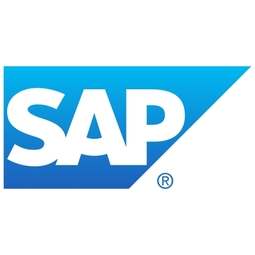
Supplier
SAP
SAP is the leading provider of enterprise resource planning (ERP) software used to integrate back-office functions such as distribution, accounting, human resources, and manufacturing. The backbone of SAP's products has been its On-Premise offerings, spearheaded by its Business Suite, which includes ERP and customer relationship management (CRM) software, among others. Year founded: 1972 Revenue: $17.6 billion (2014) NYSE: SAP
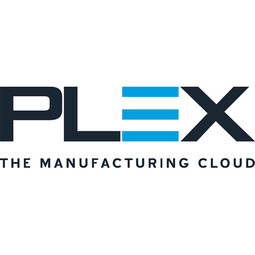
Supplier
Plex Systems
The Plex Manufacturing Cloud ushers in a new era of ERP with a complete system designed to power today’s modern manufacturer.Built from the plant floor up, the Plex Manufacturing Cloud enables forward-thinking businesses to increase throughput with existing facilities, squeeze more profits from every order, understand where they are most exposed to risk, respond to customer demand, and keep up with the speed and volume of data on today’s plant floor.With the Plex Manufacturing Cloud, implementations move from months to weeks, customers only pay for what they need, and the focus is on configuration, not customization. Powered by industrial strength data centers and security, the Plex Manufacturing Cloud fundamentally lowers the cost structure of IT.The Plex Manufacturing Cloud is the only ERP solution with manufacturing at its core. As a result, customers have complete visibility into their operations and plant data, and can leverage those details to drive profits. Plex’ focus on driving continuous innovation makes it easy for customers to continually innovate operations, change processes and business models.
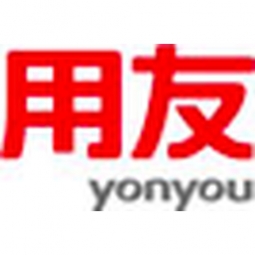
Supplier
Yonyou
Headquartered in Beijing, Yonyou was founded in 1988 and its network of 100 offices spans the globe with more than 12,000 employees.Yonyou is a leading enterprise management software and cloud service provider in the Asia Pacific. More than 60% of China's top 500 enterprises use the Yonyou service.

Supplier
Futurism AI- Next Gen AI Solutions
Futurism AI offers innovative artificial intelligence solutions that transform businesses across industries. We specialize in AI-driven automation, data analytics, natural language processing, and predictive modeling to help organizations improve efficiency and make smarter decisions. Our custom AI solutions for healthcare, finance, manufacturing, and retail sectors, ensuring measurable business impact. With a strong focus on ethical AI, data security, and seamless integration, Futurism AI empowers companies of all sizes from startups to global enterprises to optimize operations, reduce costs, and adopt smarter business strategies. Partner with us to build a future-ready business powered by intelligent technology.







